Lapierre Aircode DRS 8.0 road bike review
Like a fine wine, the Lapierre Aircode has improved with age: this third iteration of the French brand's aero bike is elegant and refined with a very, very fast finish
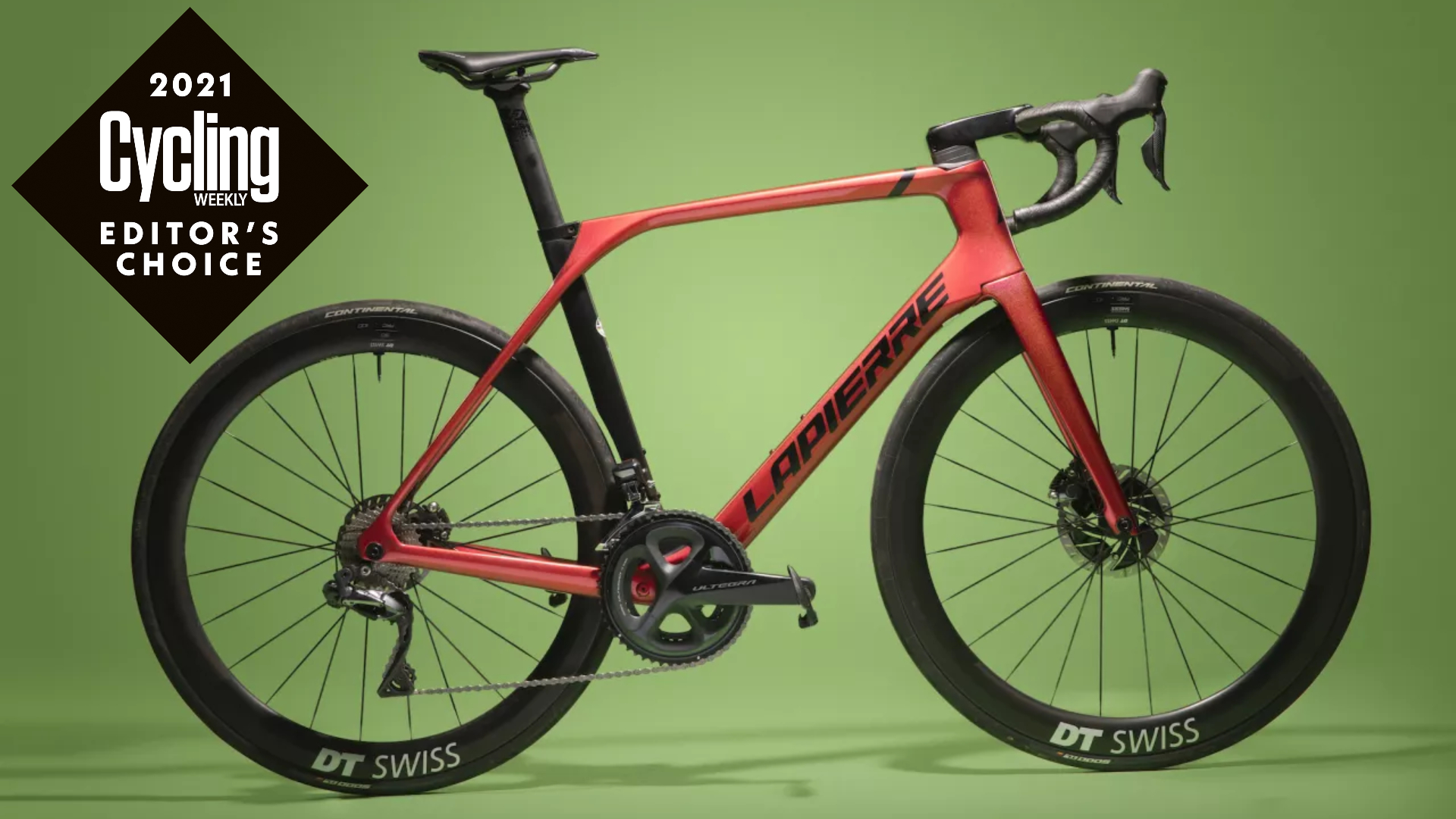
The Lapierre Aircode DRS 8.0 is an awesomely fast bike perfectly suited to racing and good enough to take on the pro-level models from the big brands. At the moment it would benefit from the option of a setback seatpost as well as the zero offset one to make it more accessible to those looking for a more 'roadie' position. That's in the pipeline with no release date at the moment, but once Lapierre can offer that, it will be a truly great road bike.
-
+
Fast
-
+
Great handling
-
+
High-end wheels
-
+
Beautiful paint
-
-
No setback seatpost option (yet)
You can trust Cycling Weekly.

The Lapierre Aircode DRS 8.0 is the consumer flagship model of the aero bike that's used by the Groupama-FDJ team.
Launched last September, this third iteration of the Aircode is easily the best yet. It might seem like a case of third time lucky, except it’s more by design than luck. The French brand has clearly done its aero homework and dotted all the i’s, crossed all the t’s and gone off to optimise them in the wind tunnel.
The latest Lapierre Aircode looks elegant while maintaining a distinctive Lapierre look – something that made it stand out from the crowd before, but not necessarily in a good way – and most importantly, it absolutely flies.
Like many modern race bikes the Aircode DRS frame is disc-brake only, and integration of these – and everything else for that matter – is stylishly executed. The only thing I would say it lacks is a setback seatpost option at the moment: the proprietary zero offset pillar puts the rider in an aggressive, aero position that’s perfect for racing, but can be a little unrelenting if you’re not a pro – and also even if you are: I’ve seen the FDJ Aircodes set up with a setback seatpost, so it would great if this was made available to customers too. Lapierre's UK distributors agree that this is necessary and are working with the brand to finalise the spec, and say they will update us as soon as they get the go ahead – and we'll update this review as soon as we have more details on this.
Lapierre Aircode DRS 8.0: frame
Lapierre says its goal was to make the new Aircode more aerodynamic, stiffer yet more comfortable than the previous version.
The cables and Di2 wires disappear into the cockpit via a new bespoke bar and stem – there’s not a single one exposed to the airflow. The fork crown blends very neatly into the down tube, with just the tiniest gap. All of the tubing is NACA aerofoil profiled as you’d expect, and in wind tunnel tests the new frame is 13 per cent faster, according to Lapierre.
Lapierre says it has made the geometry more aggressive to put the rider into a more powerful position, which would seem to be the opposite of what other brands have been doing recently. The position is certainly lower than that of the Specialized Tarmac SL7. The sizes aren’t directly comparable but you’re looking at 557mm stack/403mm reach in the size L Aircode compared to 581mm stack and 405mm reach in the size 58 Tarmac.
Despite the wheelbases of those two bikes being within a millimetre of each other at just over 1000mm, the Aircode has very short 405mm chainstays compared to 410mm on the SL7, which means the Aircode's front centre-measurement gets an extra 5mm to supply stability, time trial bike style.
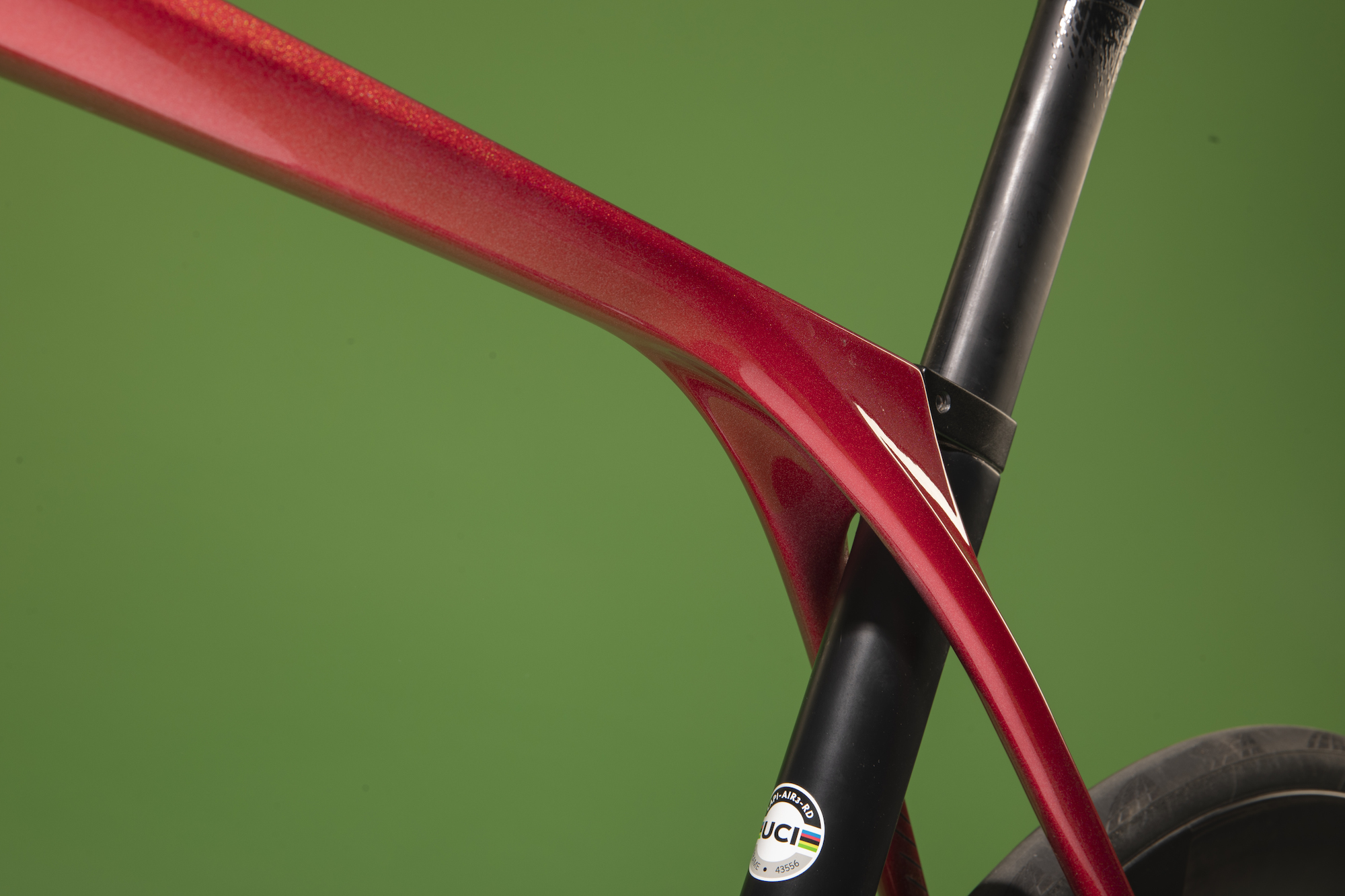
For comfort Lapierre says the new Aircode is 12 per cent more vertically compliant than the old Aircode SL thanks to a new seat tube design that isolates it and allows it to flex more since it’s not joined to the seatstays (the seatstays flow into the top tube rather than connecting to the seat tube. It has almost become a Lapierre tradition to experiment with the top tube/seat tube juncture. It's a really original alternative to the ubiquitous dropped seatstays and, unlike some previous Lapierre seat tube cluster arrangements, it looks very chic. If you remember the ‘triple triangle’ GT design, this might give you a flashback. This is like a futuristic version of that.
There's no mention of weight being reduced, but the new Aircode frame at 900g shaves a few grams off the earlier version, with our size large test bike weighing 7.7kg, which is not the lightest but not bad for an aero bike with this spec. Lapierre has rightly put aerodynamics first.
Components
The Lapierre Aircode DRS 8.0 comes with Shimano Ultegra Di2. It’s slightly unusual for the flagship model to come with Shimano’s second-string groupset, but it does save quite a bit of money compared to Dura-Ace Di2, and the performance of electronic Ultegra is very impressive anyway for just a small amount of extra weight – around 200g – so I would say it’s a good call.
In keeping with everything being hidden, it comes with the discreet Di2 bar-end junction box.
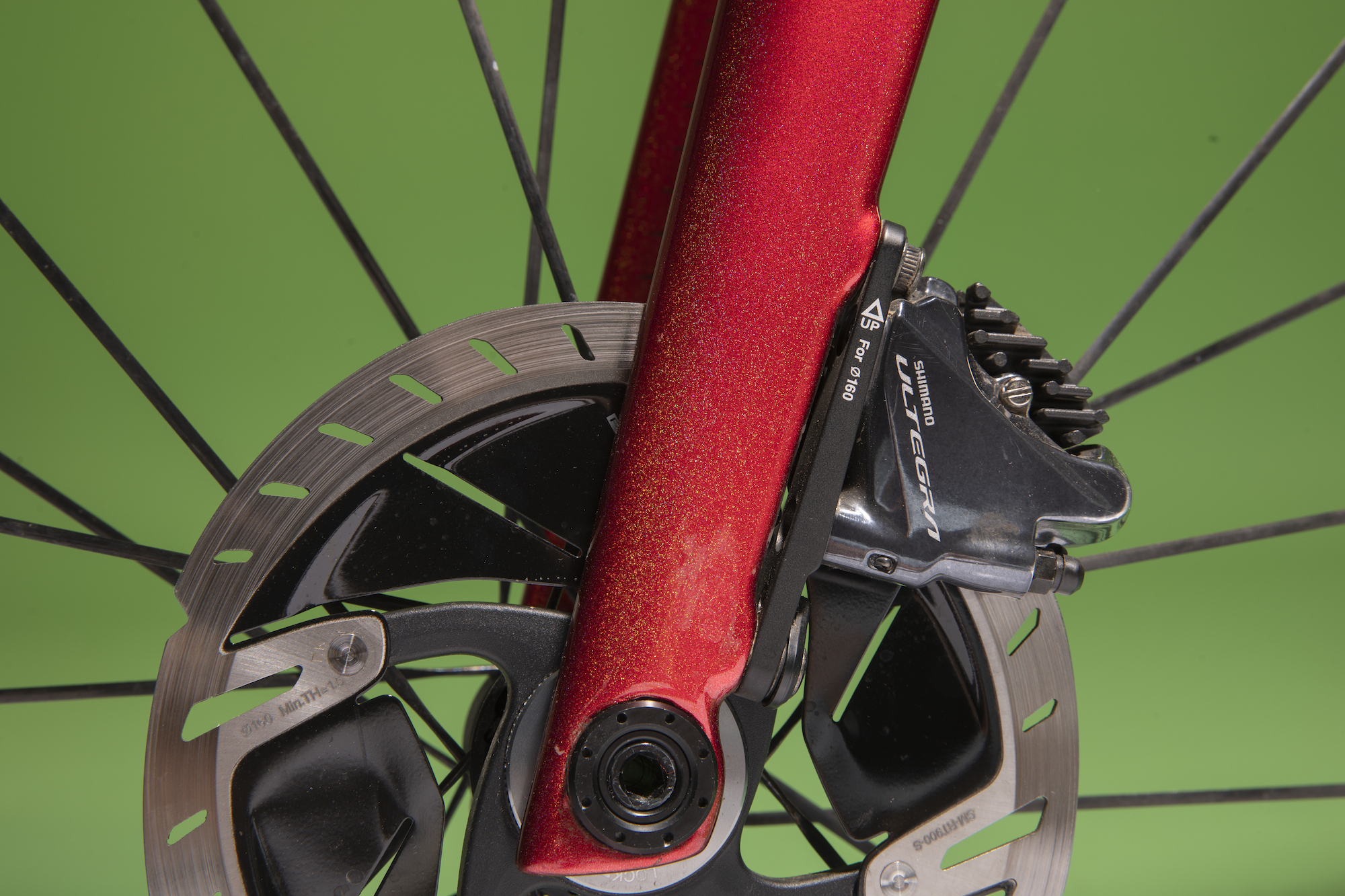
As I've mentioned, the new Aircode DRS is disc brake only, and for the 8.0 Lapierre upgrades the rotors (160mm front and 140mm rear) to Dura-Ace, which have a slightly different aesthetic (black Ice Tech Freeza centre compared to ‘meat slicer’ silver) and are slightly lighter.
The DT Swiss ARC 1100 DB carbon wheels have a 50mm depth and are tubeless ready – our test bike came set up tubeless with Conti Grand Prix 5000 TLs.
I would probably go down to a rim of about 30mm for all-round riding, but for racing or even time trialling using the included bars these are incredible wheels, very aero, very stiff and very light for their depth – just over 1,500g – and account for almost a third of the budget of this bike, retailing at over £2,000 separately.
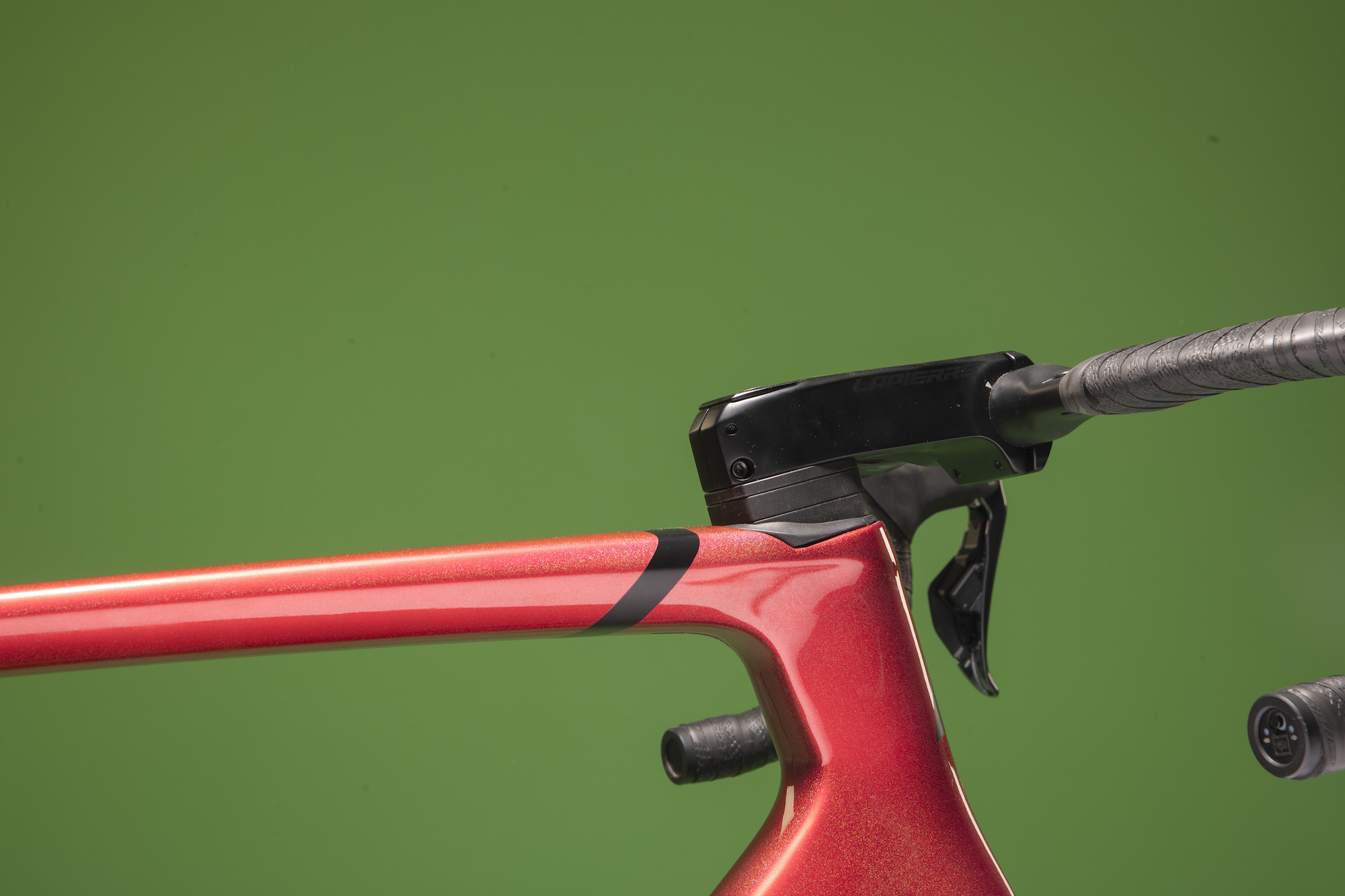
The 7.0 and this top 8.0 model come with a proprietary handlebar so that Lapierre tri-bar extensions – included in the box, with spacers and bolt kit – can be bolted to directly and it can be used as a TT or tri bike.
There are four complete builds and a frameset only, which comes with two seatposts – the zero offset one and a setback one – but which isn't available in the UK at the moment.
The ride
The first time I rode the Lapierre Aircode DRS 8.0 around my 30-mile test loop I averaged over 21mph, nearly 2mph faster than when I rode it two weeks earlier on my winter bike. I didn’t use a power meter but my heart rate (old school, I know) was exactly the same for both rides give or take a bpm.
It’s not a very scientific test but it’s proof enough for me that the new Aircode is a very fast bike indeed.
The contact points between the Lapierre and my steel winter bike were surprisingly similar, so I can’t even put it down to a more aero position. It felt like a combination of everything happening far more smoothly and efficiently.
The position further over the bottom bracket via the zero-offset seatpost is definitely more powerful, though. The seat tube angle itself, at 73.5 on the size L, is not steep, but the zero seatpost effectively steepens it, and the Aircode felt to me a bit like riding a TT bike on the base bar.
On a longer 40-mile ride I did find myself wanting to sit back on the saddle to take some of the pressure off my arms.
The other effect of a forward sitting position is a decreased level of comfort. Despite the cleverness of Lapierre’s seat tube cluster design, I didn’t feel much cushioning, probably mainly because I was sitting right on top of the seatpost rather than just behind it.
As I've mentioned, I believe a setback seatpost would easily solve this. The increased effective reach would need to be taken into account but for me, using measurements from my last bike fit, it would work fine, and I'm within normal sizing parameters.
As for the handling, it’s very crisp but never twitchy, thanks to the little bit of extra front-centre. Additionally, the fork is great. With a 1.5in lower bearing and massively deep blades it’s really solid. Lapierre’s stem and bar are stiff too, making a very direct-feeling front end that unsurprisingly works well for sprinters.
And the DT Swiss wheels shod with the tubeless GP 5000s felt just incredibly fast, really bolstering performance.
Value
Of similarly specced Ultegra Di2 bikes, the Specialized Tarmac SL7 Expert undercuts it at £5,250. The Giant Propel Advanced Pro 0 costs £5,699 and comes with a power meter. The Trek Madone SL 7 costs £6,000. However, the BMC Teammachine SLR01 Four will set you back £6,500.
So it’s fair to say the Lapierre Aircode DRS 8.0 is at the mid to upper end of the category, but you do get a very expensive set of wheels in the DT Swiss ARC 1100 DB 50s, whereas with the Specialized Tarmac Expert, for example, you get aluminium entry-level DT Swiss wheels. Lapierre's decision to spend on really high-end wheels is a good one, and it's to the frame's credit that they don't overshadow it.
There's an argument that you're getting two bikes – a road bike and a TT bike – for the price of one thanks to Lapierre's neat optional tri-bars that are included in the price. The British time trialling scene is famously geeky over specialist equipment so I'm not convinced we'll see many Aircodes in their tri-bar configurations out on the dual carriageways, but its convertability ought to appeal to triathletes who are more likely to look for one bike to rule them all.
To sum up, the price is more or less in line with what you'd expect to pay for a bike at this level with these components. The excellent wheels are a bonus, and there's added value in the fact that this is a unique and striking-looking bike – you're unlikely to see another one on your club run – with that little bit of je ne sais quoi that the commoner bikes lack.

Thank you for reading 20 articles this month* Join now for unlimited access
Enjoy your first month for just £1 / $1 / €1
*Read 5 free articles per month without a subscription

Join now for unlimited access
Try first month for just £1 / $1 / €1
Get The Leadout Newsletter
The latest race content, interviews, features, reviews and expert buying guides, direct to your inbox!
Simon Smythe is a hugely experienced cycling tech writer, who has been writing for Cycling Weekly since 2003. Until recently he was our senior tech writer. In his cycling career Simon has mostly focused on time trialling with a national medal, a few open wins and his club's 30-mile record in his palmares. These days he spends most of his time testing road bikes, or on a tandem doing the school run with his younger son.
-
 'This race is absolutely disgusting': Peloton reacts to another brutal Paris-Roubaix Femmes
'This race is absolutely disgusting': Peloton reacts to another brutal Paris-Roubaix FemmesNow in its fifth edition, Paris-Roubaix Femmes is still a tough race, even for the best bike riders in the world
By Adam Becket Published
-
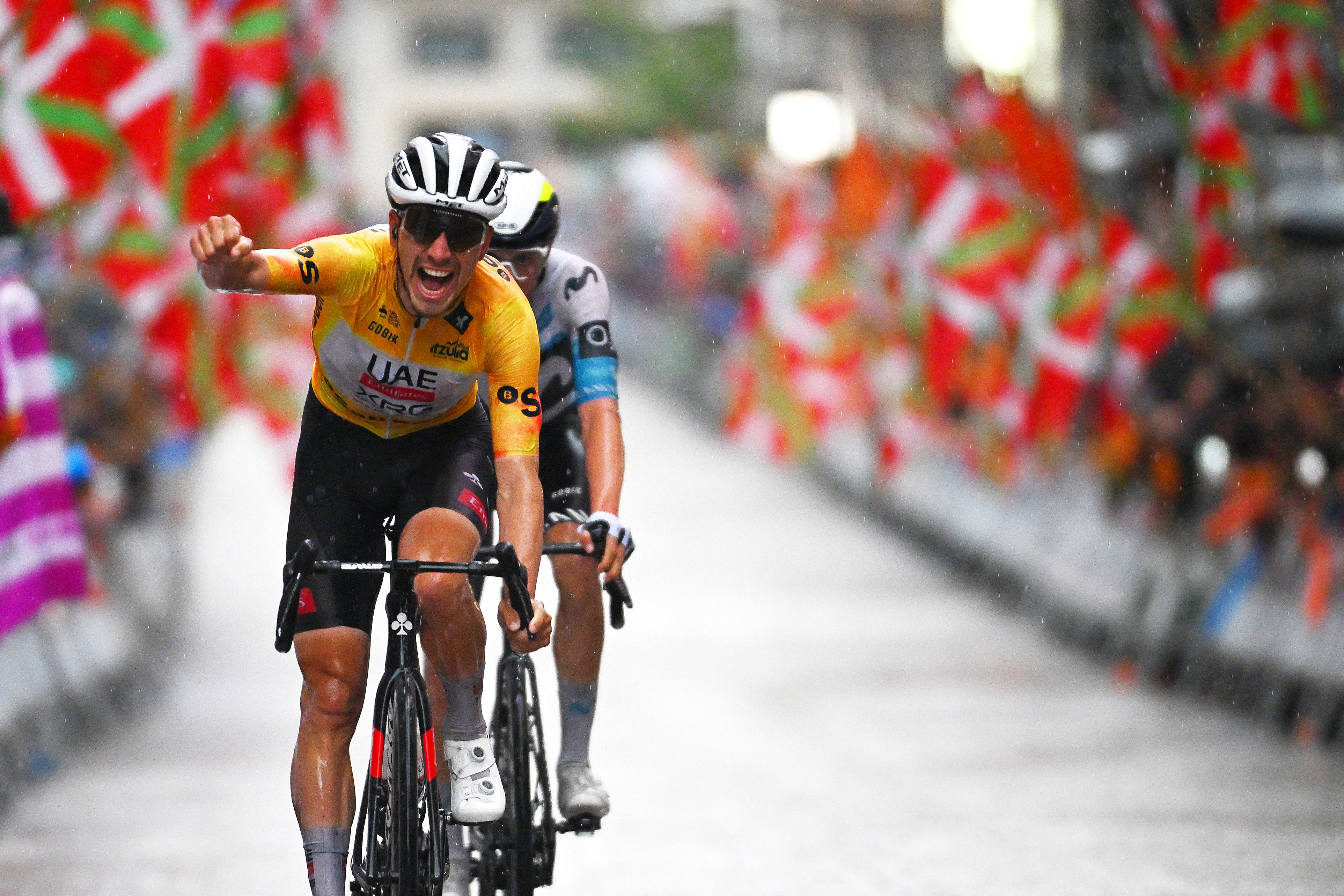 ‘It’s the biggest win of my career’ says João Almeida after crushing Itzulia Basque Country success
‘It’s the biggest win of my career’ says João Almeida after crushing Itzulia Basque Country successUAE rider wins the final stage to finish almost two minutes clear of Enric Mas on GC, with Max Schachmann in third
By Peter Cossins Published
-
 'I have an exam in a month and a half' - Carys Lloyd becomes Paris-Roubaix's youngest ever rider
'I have an exam in a month and a half' - Carys Lloyd becomes Paris-Roubaix's youngest ever riderBritish teenager and A-Level student makes it to the velodrome on debut
By Tom Davidson Published